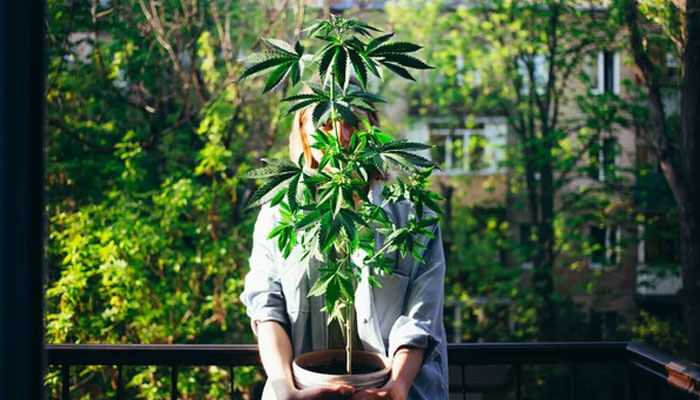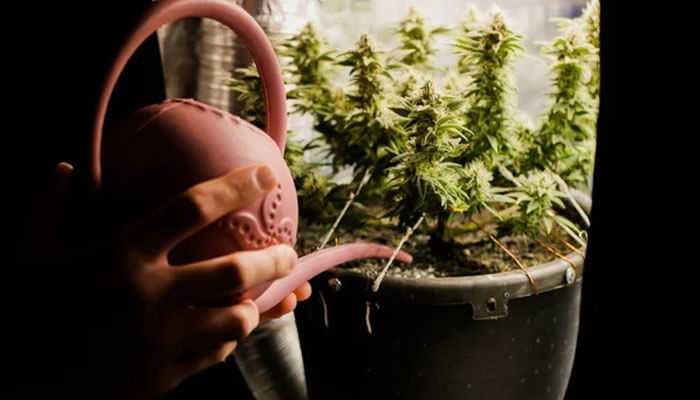Cultivating Cannabis Plant at home has become an appealing endeavor for enthusiasts seeking to personalize their experience and understand the nuances of this versatile plant.
With the right approach, anyone can transform their indoor space into a thriving cannabis garden. This comprehensive guide will walk you through the process of growing your first cannabis plant at home, ensuring that each step is clear, actionable, and designed to maximize your plant’s potential.
Understanding Cannabis Cultivation Basics
Before diving into the cultivation process, it’s crucial to grasp some fundamental aspects of cannabis growth. Cannabis plants can be categorized into two main types: Indica and Sativa, with hybrid strains offering a blend of both. Each type has specific growth patterns, flowering times, and care requirements. Additionally, understanding the difference between autoflowering and photoperiod strains is vital. Autoflowering plants transition from the vegetative stage to the flowering stage with age, regardless of light exposure, making them ideal for beginners due to their simplicity and shorter growth cycle.
Selecting the right strain is the first step toward a successful harvest. Consider your climate, space, and personal preferences when choosing a strain. Some strains thrive in indoor environments and are more forgiving to novice mistakes. Researching and selecting a strain that aligns with your goals will set the foundation for your cultivation journey.
Setting Up Your Grow Space
Creating an optimal environment for your cannabis plant is essential for its development and yield. Here are the key components to consider when setting up your indoor grow space:
1. Lighting:
Cannabis requires ample light to grow. LED grow lights are popular for their efficiency and lower heat output. Ensure your plant receives at least 18 hours of light per day during the vegetative stage and 12 hours during the flowering stage.
2. Airflow and Ventilation:
Good ventilation is crucial to prevent mold and mildew. Use an oscillating fan to improve air circulation and a carbon filter to manage odors.
3. Temperature and Humidity:
Cannabis plants thrive in temperatures between 70-85°F during the day and slightly cooler at night. Humidity levels should be around 40-60%. Investing in a thermometer and hygrometer will help you monitor these conditions closely.
Setting up your space with these elements in mind ensures a healthy growth environment. It’s also important to choose a suitable medium for planting. Soil is the most common medium for beginners due to its buffering capabilities. However, hydroponic systems can offer faster growth rates and higher yields, though they require more investment and attention.
For enthusiasts interested in exploring more advanced techniques or seeking additional guidance on optimizing their indoor cultivation environment, this comprehensive guide offers a deep dive into everything from selecting the ideal grow room setup to advanced lighting strategies. Dive into the article to elevate your indoor growing skills to the next level.
Planting Your Cannabis
Starting with quality seeds is paramount. Germinate your seeds by placing them between moist paper towels in a warm, dark place until a taproot appears, usually within a few days. Once germinated, plant the seeds in small pots with your chosen medium, ensuring the taproot faces downward. The initial stage of your plant’s life is delicate; ensure consistent moisture and warmth, and avoid overwatering to prevent root rot.
Vegetative and Flowering Stages
1. Vegetative Stage:
This growth phase is characterized by the plant focusing on developing strong roots and foliage. During this period, maintain the 18/6 light cycle and monitor your plant for any signs of nutrient deficiencies or pests. Regular watering and the introduction of nitrogen-rich nutrients will support healthy growth.
2. Flowering Stage:
Trigger the flowering stage by adjusting the light cycle to 12/12 (hours of light/darkness). This stage requires phosphorus and potassium-rich nutrients to support bud formation. Monitor the plant’s trichomes and pistils to determine the optimal harvest time. Trichomes should be milky white or amber, indicating peak THC levels.
Harvesting, Drying, and Curing
Harvesting at the right time is crucial for maximizing potency and flavor. Once your plant has matured, cut the branches, trim away the large leaves, and hang the branches in a dark, well-ventilated space to dry.
This process can take up to two weeks. After drying, cure the buds by placing them in airtight jars, opening them daily to let them “breathe” and release any excess moisture. Curing enhances the potency, flavor, and overall smoking experience.
Conclusion
Cultivating your first cannabis plant at home is a rewarding journey that deepens your connection to the plant and its myriad uses.
By understanding the basics of cannabis cultivation, setting up an optimal grow space, carefully selecting your strain, and nurturing your plant through its growth cycles, you can achieve a successful harvest.
Remember, patience and attentiveness are key. Each plant is unique, and with each growth cycle, you’ll gain invaluable insights and skills to improve your future cultivation endeavors. Embrace the learning process, and enjoy the fruits of your labor.




